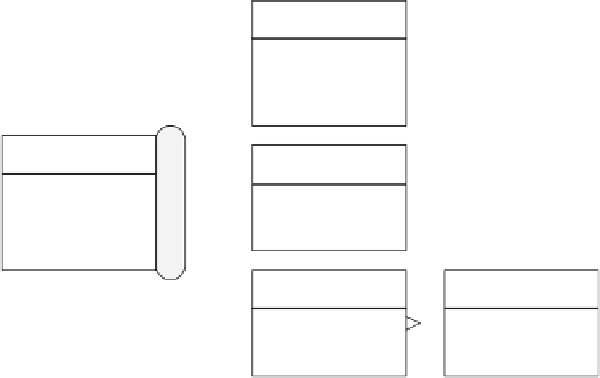Database Reference
In-Depth Information
Generalized hierarchies are, in general, not summarizable. For example, not
all customers are mapped to the
Profession
level. Thus, the aggregation
mechanism should be modified when a splitting level is reached in a roll-
up operation.
In generalized hierarchies, it is not necessary that splitting levels are
joined. An example is the hierarchy in Fig.
4.7
, which is used for analyz-
ing international publications. Three kinds of publications are considered:
journals, books, and conference proceedings. The latter can be aggregated
to the conference level. However, there is not a common joining level for all
paths.
Journal
JournalName
Volume
Number
Year
Publication
Book
PublicationId
Title
Abstract
NoPages
BookName
Publisher
Year
Proceedings
Conference
ProceedingsName
AcceptanceRate
Year
Conferenceld
ConferenceName
Description
Fig. 4.7
A generalized hierarchy without a joining level
Generalized hierarchies include a special case commonly referred to as
ragged
hierarchies. An example is the hierarchy
City
→
State
→
Region
→
Continent
given in Fig.
4.2
. As can be seen in Fig.
4.8
,some
countries, such as Belgium, are divided into regions, whereas others, such
as Germany, are not. Furthermore, small countries like the Vatican have
neither regions nor states. A ragged hierarchy is a generalized hierarchy
where alternative paths are obtained by skipping one or several intermediate
levels. At the instance level, every child member has only one parent member,
although the path length from the leaves to the same parent level can be
different for different members.
Country
→
4.2.4 Alternative Hierarchies
Alternative hierarchies
represent the situation where at the schema level,
there are several nonexclusive hierarchies that share at least the leaf level.












Search WWH ::

Custom Search